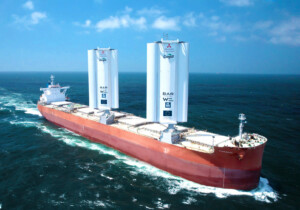Last May, Zeina Koreitem and John May of the experimental Los Angeles architectural practice MILLIØNS conducted a weeklong workshop for Space Saloon, a “community in residence” design-build festival in Morongo Valley, California. While the small-scale structure they oversaw in the desert landscape was novel in form, spatial sequencing, and coloration, its most stunning aspect was perhaps the fact that it was primarily built with hempcrete, a material virtually nonexistent in the American construction industry.
Currently, both the production and application of concrete is woefully unsustainable. As the world’s most common building material, the production of the ancient compound requires a tenth of the world’s industrial water production and produces 2.8 billion tons of carbon dioxide annually. Once a concrete building is completed, its exterior envelopes absorbs and retains the sun’s heat, contributing to rising temperatures in urban areas (known as the heat island effect). If the biggest global cities, including those in India and China, continue to rely on concrete to meet the demands of their increasing populations, an additional 470 additional gigatons of carbon dioxide will be released into the atmosphere by 2050, according to the Global Commission on the Economy and Climate. All of that’s before even taking into account the material’s deadly human cost of production.
First developed in France in the 1980s, hempcrete appears to be a miracle material in contrast to its traditional cousin, beginning with how it’s produced. Not only do the hemp fields from which it originates absorb airborne carbon while they grow, but the crops continue to absorb greenhouse gases after they are harvested and transformed into building materials—287 pounds of airborne carbon dioxide are estimated to be captured by one cubic meter (35 cubic feet) of hempcrete, while a half-ton is emitted into the atmosphere by each ton of cement, according to the European Cement Association. Hempcrete is also up to eight times lighter than concrete, meaning it takes significantly less energy to transport, minimizing its carbon footprint even further.
When the inner woody core of hemp plants, known as hemp hurds, is mixed with lime or clay as a binding agent, the fibrous consistency of hempcrete has demonstrated better ventilation, fire resistance, and temperature regulation properties than its predecessor. Although the material doesn’t offer the same load-bearing capabilities of traditional concrete, developers throughout Europe have made great efforts to test its limits and have so far produced buildings as high as ten stories (which could, of course, be improved with increased research and application).
Despite all of the apparent benefits of hempcrete, the North American construction industry is only beginning to take note. Following the passage of the 2018 Farm Bill, which legalized hemp’s cultivation under certain conditions, there are only about 50 homes throughout the U.S. built at least partially with hemp, while the practice has become relatively common in Canada and Europe. As marijuana production becomes a more regulated industry, and hopefully the production of hempcrete and other hemp materials could become the building blocks of America’s future as the material becomes less stigmatized.











